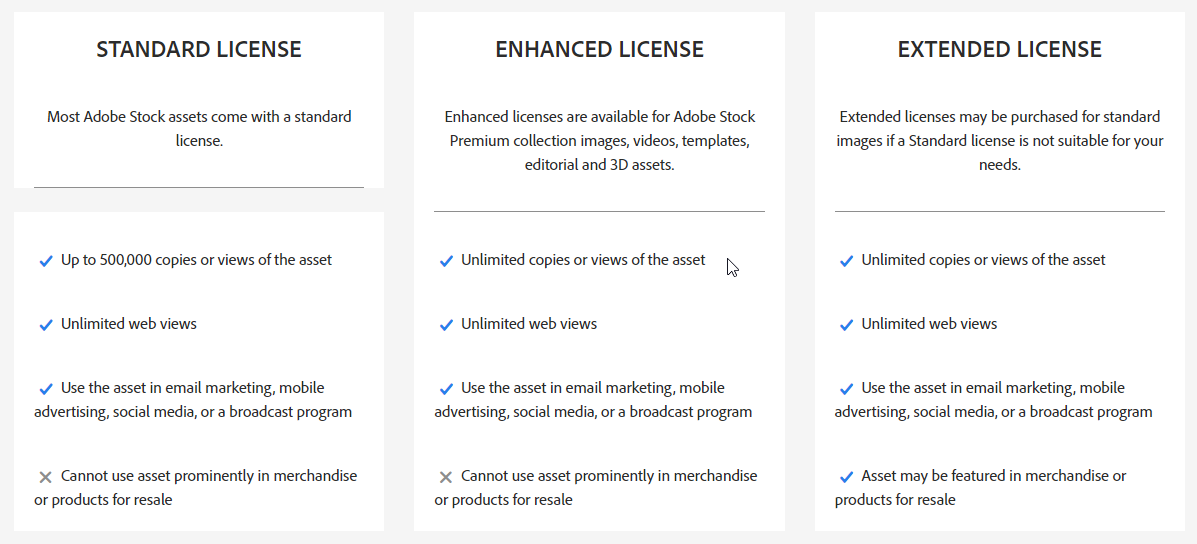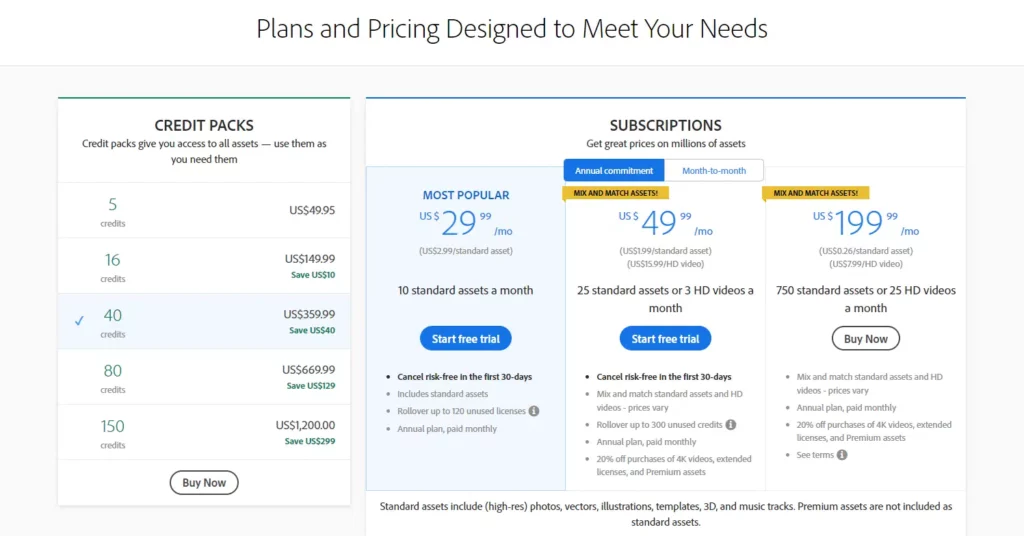Licensing is a crucial aspect of the stock photography industry, dictating how images can be used in various projects. In this digital age, where visuals play a pivotal role in communication and marketing, understanding licensing terms is paramount for both creators and users of imagery. Among the leading platforms for licensing images, Adobe Stock stands out as a prominent choice, offering a vast library of high-quality photos, illustrations, and vectors.
However, within the realm of licensing options, the Adobe Stock Extended License often raises questions and curiosity. This blog post aims to delve into the intricacies of Extended Licenses on Adobe Stock, shedding light on their costs, implications, and benefits. By grasping the nuances of Extended Licenses, users can make informed decisions about licensing images for their projects and campaigns.
Understanding Licensing:

Licensing in stock photography refers to the legal agreement between the creator (photographer, illustrator, etc.) and the buyer, granting specific usage rights for an image. These usage rights can vary based on the type of license purchased, dictating factors such as where, how, and for how long an image can be used.
For both buyers and contributors, understanding licensing terms and costs is crucial. Buyers need to ensure they acquire the appropriate license for their intended use to avoid copyright infringement and legal repercussions. Contributors must comprehend licensing terms to protect their intellectual property rights and receive fair compensation for their work. By understanding licensing terms and costs, both parties can navigate the stock photography market effectively and ethically.
Also Read This: How to Get a Behance API Key
Overview of Adobe Stock Extended Licenses:

Adobe Stock offers an Extended License option alongside its Standard License, providing buyers with additional usage rights beyond the standard terms. The Extended License allows for broader and more flexible usage of the licensed images compared to the Standard License.
The primary differences between the Standard and Extended Licenses lie in the scope of usage rights granted and the associated costs. While the Standard License typically permits use in digital media, marketing materials, and print projects with certain limitations, the Extended License extends these rights to include larger print runs, merchandise for resale, and other uses not covered by the Standard License.
In terms of costs, Extended Licenses are typically priced higher than Standard Licenses due to the expanded usage rights they offer. The exact pricing may vary depending on factors such as image size, distribution, and duration of use. Buyers should carefully consider their usage needs and budget constraints when deciding between Standard and Extended Licenses.
Also Read This: How Many Photos on Shutterstock Before You Make Money and Tips to Reach Your Goal
Cost Factors:
Several factors influence the cost of Adobe Stock Extended Licenses, making it essential for buyers to understand these variables when considering their licensing options.
- Image Size: The size and resolution of the licensed image can affect its price. Higher resolution images suitable for large-scale printing or high-resolution digital projects may come with a higher price tag.
- Distribution: The intended distribution or reach of the image also impacts its cost. Images intended for widespread distribution, such as in national advertising campaigns or global publications, may incur higher licensing fees.
- Duration of Use: The duration for which the buyer intends to use the image can influence the licensing cost. Longer-term usage rights, such as perpetual use or extended durations, may result in higher fees compared to shorter-term licenses.
- Usage Scope: The scope of usage rights granted under the Extended License can affect pricing. Additional usage rights, such as the ability to use the image on merchandise for resale or in templates for multiple clients, may come with higher costs.
By considering these factors, buyers can make informed decisions about the type of Extended License that best suits their usage needs and budget constraints.
Also Read This: How to Block Someone on Behance
Pricing Structure:
Adobe Stock offers a flexible pricing structure for Extended Licenses, catering to the diverse needs of buyers with varying usage requirements. The pricing for Extended Licenses is typically based on several factors, including image size, distribution, duration of use, and scope of usage rights.
Buyers can choose from different pricing tiers and options to accommodate their specific needs and budget constraints. Adobe Stock may offer pricing packages tailored to different usage scenarios, such as single-use licenses for specific projects or multi-use licenses for ongoing and widespread usage.
Additionally, Adobe Stock may provide volume discounts or subscription-based pricing options for buyers who require multiple Extended Licenses or anticipate frequent licensing needs. By exploring the available pricing tiers and options, buyers can select the most cost-effective and suitable Extended License for their projects.
Also Read This: How to Add Your Portfolio to LinkedIn and Impress Recruiters
Examples and Scenarios:
To better understand the costs associated with Adobe Stock Extended Licenses, let's explore a few hypothetical scenarios and examples:
- Scenario 1: Digital Marketing Campaign
- A marketing agency intends to use an image from Adobe Stock in a digital marketing campaign targeting social media platforms and websites.
- The agency requires an Extended License to use the image in multiple digital channels for an extended duration.
- The cost of the Extended License is higher due to the widespread distribution and longer-term usage rights required for the campaign.
- Scenario 2: Print Advertisement
- A publishing company wishes to use an image from Adobe Stock in a print advertisement featured in a national magazine.
- The company opts for an Extended License to cover the large print run and distribution of the magazine.
- The cost of the Extended License is calculated based on factors such as image size, distribution, and duration of use.
- Scenario 3: Merchandise Design
- A clothing brand plans to use an image from Adobe Stock as a design element on t-shirts and merchandise sold through its online store.
- The brand selects an Extended License to allow for the resale of products featuring the image.
- The cost of the Extended License accounts for the commercial use of the image on merchandise for resale.
These examples highlight how pricing for Adobe Stock Extended Licenses can vary depending on the specific usage requirements and scope of rights needed for different projects and scenarios. By assessing their usage needs and budget constraints, buyers can determine the most suitable licensing option for their projects.
Also Read This: How to Repost a Video on YouTube and Share Your Content Effectively
Benefits of Extended Licenses:
Opting for an Adobe Stock Extended License offers several benefits and advantages for buyers, providing greater flexibility and expanded usage rights compared to Standard Licenses.
- Expanded Usage Rights: Extended Licenses grant buyers broader usage rights beyond those covered by Standard Licenses. This includes the ability to use the licensed images in larger print runs, merchandise for resale, and additional commercial projects.
- Flexibility: Extended Licenses offer greater flexibility in how the licensed images can be used, allowing buyers to adapt them to various projects and applications without limitations. This flexibility is especially valuable for businesses and organizations with diverse marketing and promotional needs.
- Commercial Use: Extended Licenses permit commercial use of the licensed images, enabling buyers to incorporate them into products, advertisements, and promotional materials intended for commercial distribution and resale.
- Enhanced Protection: Extended Licenses provide buyers with added legal protection and peace of mind by ensuring they have the necessary rights and permissions to use the images in their projects. This reduces the risk of copyright infringement and potential legal issues.
- Professional Quality: Extended Licenses are available for high-resolution images and premium content, ensuring buyers have access to professional-quality visuals suitable for their projects.
Overall, opting for an Adobe Stock Extended License offers buyers greater freedom, flexibility, and peace of mind when using licensed images for their projects. By understanding the benefits of Extended Licenses, buyers can make informed decisions about licensing options that best suit their needs and objectives.
Also Read This: Understanding Telegram's Functionality and Availability in Canada
Considerations for Buyers:
When contemplating the purchase of an Adobe Stock Extended License, buyers should consider several factors to ensure they make an informed decision aligned with their specific needs and objectives.
- Usage Needs: Evaluate the intended use of the licensed images and determine whether the scope of usage rights granted by an Extended License aligns with your project requirements. Consider factors such as distribution channels, duration of use, and intended audience to assess the suitability of an Extended License.
- Budget Constraints: Take into account your budget limitations and financial resources when considering the purchase of an Extended License. Compare the cost of Extended Licenses against your projected return on investment (ROI) and assess whether the benefits outweigh the expenses.
- Value Proposition: Assess the value proposition offered by an Extended License in terms of the additional usage rights and flexibility provided. Consider whether the expanded usage rights and enhanced protection justify the higher cost of an Extended License compared to a Standard License.
- Project Scope: Consider the scale and complexity of your project when evaluating the necessity of an Extended License. Projects with larger print runs, commercial distribution, or merchandise resale may require the broader usage rights offered by an Extended License to ensure compliance with legal and licensing requirements.
- Long-Term Considerations: Factor in long-term considerations when deciding on the type of license to purchase. If you anticipate future use or repurposing of the licensed images across multiple projects or campaigns, investing in an Extended License may offer greater flexibility and cost savings in the long run.
By carefully considering these factors, buyers can make informed decisions about whether to purchase an Adobe Stock Extended License and select the licensing option that best aligns with their usage needs, budget constraints, and project objectives.
Also Read This: Create Impactful Presentations with Canva Google Slides Templates
FAQs
Q: What is an Extended License on Adobe Stock? A: An Extended License on Adobe Stock grants buyers broader usage rights for licensed images beyond those covered by the Standard License. It allows for uses such as larger print runs, merchandise for resale, and commercial distribution.
Q: How much does an Adobe Stock Extended License cost?
A: The cost of an Adobe Stock Extended License varies depending on factors such as image size, distribution, duration of use, and scope of usage rights. Pricing is typically higher than Standard Licenses due to the expanded usage rights provided.
Q: Can I use an Adobe Stock Extended License for commercial purposes?
A: Yes, an Adobe Stock Extended License permits commercial use of the licensed images, allowing buyers to incorporate them into products, advertisements, and promotional materials intended for commercial distribution and resale.
Q: Are there any limitations on the usage of images with an Extended License?
A: While Extended Licenses offer broader usage rights compared to Standard Licenses, there may still be certain restrictions and limitations outlined in the licensing agreement. Buyers should review the terms and conditions carefully to ensure compliance with usage guidelines.
Q: How do I purchase an Adobe Stock Extended License?
A: To purchase an Adobe Stock Extended License, simply select the desired image on the Adobe Stock website and choose the Extended License option during the checkout process. Follow the prompts to complete the purchase and obtain the necessary usage rights.
Q: Do I need an Extended License for all my projects?
A: Whether you need an Extended License for your projects depends on factors such as the intended use, distribution channels, and duration of use. Evaluate your usage needs and assess whether the broader usage rights provided by an Extended License are necessary for your specific projects.
Conclusion:
In conclusion, understanding the cost of Adobe Stock Extended Licenses is essential for buyers looking to license images for their projects. By considering factors such as image size, distribution, duration of use, and scope of usage rights, buyers can make informed decisions about the type of license that best suits their needs and budget constraints.
Throughout this blog post, we've discussed the significance of Extended Licenses in providing broader usage rights and flexibility for using licensed images in various projects. We've explored the pricing structure, benefits, considerations for buyers, and addressed common questions about Adobe Stock Extended Licenses.
As you navigate the licensing process on Adobe Stock, we encourage you to carefully assess your usage needs and budget limitations. By understanding the cost of Extended Licenses and the value proposition they offer, you can effectively license images for your projects while ensuring compliance with licensing terms and legal requirements.
Thank you for reading, and we hope this blog post has provided valuable insights into understanding the Adobe Stock Extended License cost. If you have any further questions or need assistance, feel free to reach out to Adobe Stock support or consult the Adobe Stock website for more information.
